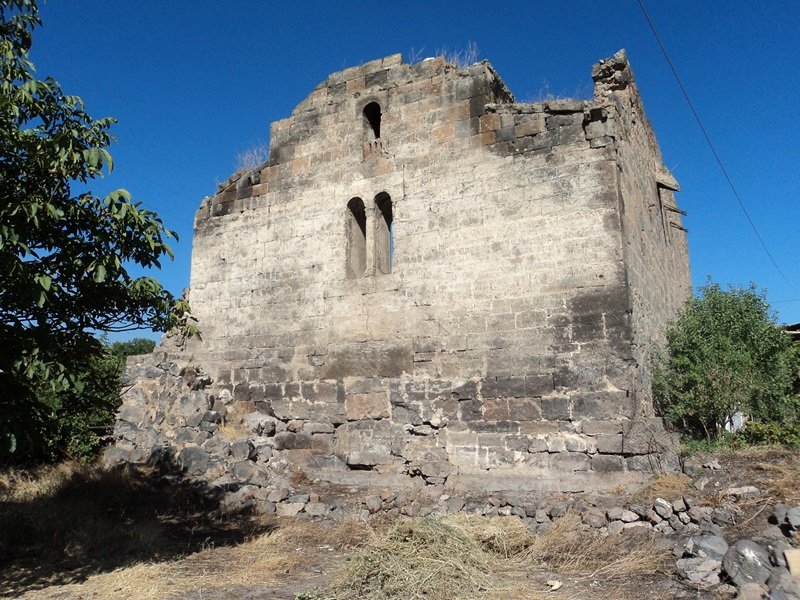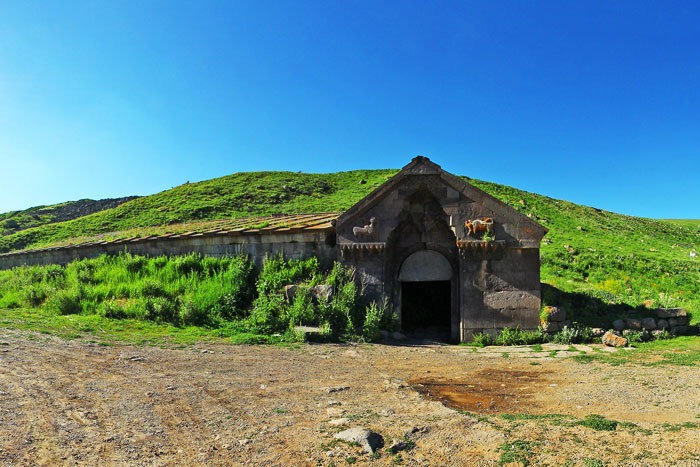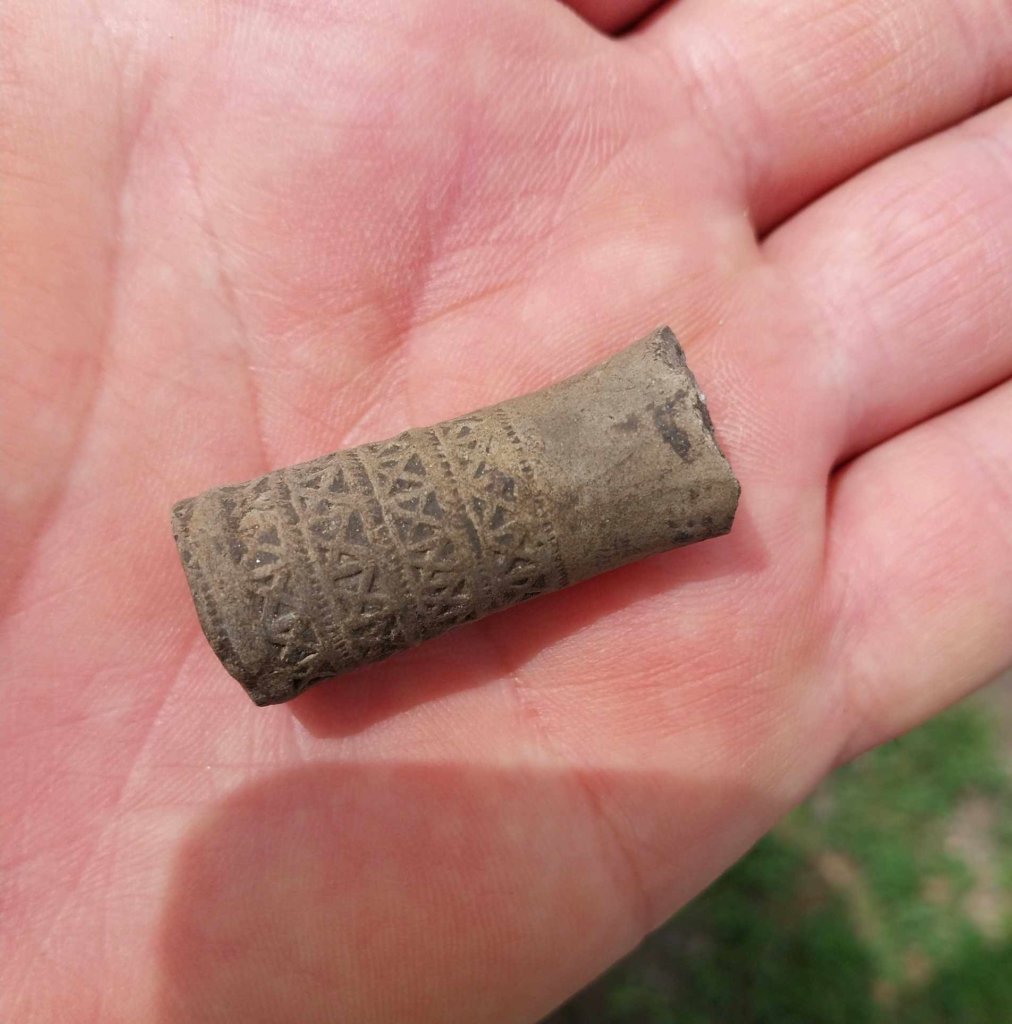/Aragatsotn region, Monument of Aragatsotn State index: 2.1.2.16/
Tsiranavor Church is one of the most important monuments of Armenian architecture among the three-nave basilica churches of the early Christian period. It is located in Ashtarak town of Aragatsotn region. Bibliographic and lithographic sources do not give us any definite information about its foundation, however, due to architectural and constructional features, researchers date it to the 4th-5th centuries.
According to the existing data, before the construction of the church, it was a place of worship for dragon, that is, the Temple of Ajdahak. After the adoption of Christianity, the temple having the same fate as other pagen buildings, was demolished and a rectangular plan church was built on its fondation.
The prayer hall of the church was divided into one central and two edge parts by two pairs of pylons. It had wooden and four-sloped roof. The church was rebuilt into a three-aisled basilica in the 5th century. Two pairs of pylons were replaced by three more powerful pairs pylons. Thanks to the latter, the wooden roof was transformed into a vault, preserving the original quadrangular composition. Sacristies were built on both sides of the main tabernacle at the same time. The windows were opened on the western parts of the façade and the entrances on the southern and northern parts.
In the 11th-12th centuries, during the years of the struggle against the Seljuks, the Zakaryans doubled the northern and western facades of the church, turning it into a strong defensive structure.
The church was completely turned into a fortress in the 18th-19th centuries. The embrasure windows were opened, particularly in the upper part of the southern wall, which were protected by stone so called “helmets”.
After the earthquake of 1827, the church kept in a dilapidated state. The roof and the north side pylons were mostly collapsed.
Defensive work and cleaning of the ruins were carried out in 1962 and excavations were organized in 1988, as a result of which the double wall of the western façade was removed, which made it possible to reveal the 1013 (990-1020) inscription of Gagik I Bagratuni.
According to the legend, three sisters living in Ashtarak fell in love with a young man named Sargis. The two elder sisters decided to sacrifice themselves to bring happiness to the younger sister and threw themselves into the abyss dressed in an apricot and red dress. On hearing this news, their little sister dressed in a white dress, threw herself into the gorge and Sargis became a hermit from this insurmountable sorrow. Later three churches appeared on the edge of the gorge: Tsiranavor, Karmravor and Spitakavor.
Literature
- Ghanaghalyan Aram, Folk talks, Yerevan, 1969 (in Armenian)
- Shahaziz Yervand, The History of Ashtarak, Yerevan, 1987 (in Armenian)
- Harutyunyan Varazdat, The History of Armenian Architecture, Yerevan, 1992 (in Armenian)
- Saghumyan Suren, Ashtarak, NAS RA, pub. 1998: (in Armenian)
- Conservation of ruined monuments, 16-24x/2002, Yerevan-Byurakan (in English)







